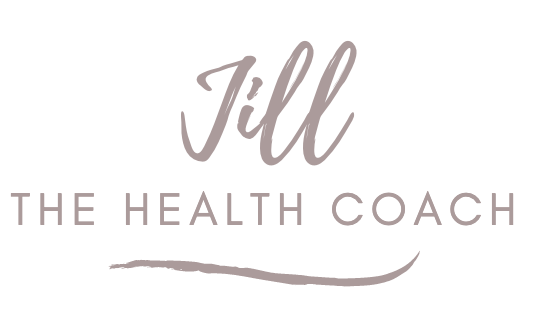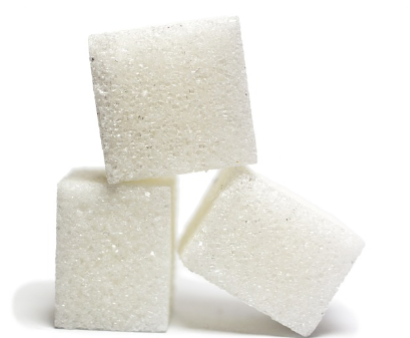“Sugar could be the driving force behind some of this country’s leading killers, including heart disease,” said Dr. Robert Lustig in a 60 Minutes interview with Dr. Sanjay Gupta.
Lustig is a world-renowned pediatric endocrinologist, sugar crusader and YouTube phenom from his documentary Sugar: The Bitter Truth. He also said that we have a “public health crisis” with the over consumption of sugar.
As a matter of fact, the average person in the US today consumes about 150 pounds per year-that’s almost 1/2 pound of sugar per day – yikes!
Consider that in 1820, the average American consumed only 20 pounds per year or just 1/10 of a pound of sugar per day. This is equivalent to drinking one can of soda.
Most of us can agree that sugar does taste great. It makes us feel pretty good, too, as it causes our brain to produce our feel-good neurotransmitter, dopamine–just like cocaine..
Yup, brain scans have shown that sugar works exactly like cocaine. It gives you the “feel good” highs followed by the lows.
Adults initially feel energized followed later by fatigue, hunger or irritability.
In children, the initial high or spike in blood sugar can make them overactive (could this be mistaken for ADD??) followed by meltdowns after the blood sugar has taken a dive.
Just like cocaine, sugar is addictive. The more we eat, the more we eventually need to satisfy our cravings leading to the overproduction of insulin.
Why is it bad to produce too much insulin and why does it matter?
When we ingest sugar, the pancreas is signaled to produce the hormone insulin. Insulin’s main job is to escort sugar out of the bloodstream and into the cells where it can be used for energy.
Insulin is meant to go to muscles for energy. However, many Americans get exercise only by moving their computer mouse! So that excess sugar leading to more insulin production, does not get used for energy as it should.
Where does it go?
The insulin takes the sugar to fat cells where it gets stored. This then can also build up as plaque and raise our LDL (the bad cholesterol) linking it to Heart Disease, hypertension and stroke.
Keep in mind if something is sticky (like sugar), it will remain sticky inside your body, too. That stickiness creates layers of plaque, narrowing arteries, among other things.
Even cancer is a well-known sugar feeder based on numerous studies.
Cancer cells have insulin receptors which thrive on insulin causing them to grow. The more sugar it gets, the more it helps it grow.
This is why standard cancer testing involves injecting a sugar solution into the body as cancer will attract sugar (hint: don’t feed cancer sugar.).
As I’ve said many times, avoid the low-fat diet hype. In fact, ever since the 70s when the low-fat craze came out, heart disease and diabetes have skyrocketed as fat in food products was replaced with sugar to make them taste better. You be the judge.
Sugar is linked to the following:
- Obesity
- Heart Disease
- Hypertension
- High blood pressure
- Hypoglycemia
- Depression
- Headaches
- Fatigue
- Nervous tension
- Aching limbs
- Diabetes
- Acne
- Stiffening of arteries
- ADD
The good news is that, as per Dr. Robert Lustig, 75% of these diseases and symptoms are reversible. Make it your business to read labels and reduce your sugar intake.
The American Heart Association recommends that men eat 150 calories in sugar per day and the women eat 100 calories in sugar per day. That is about 38 grams (or 9.5 tsp) sugar for men or 25 grams (or 6 tsp) sugar for women.
To get an idea of how much sugar is in food, there are 40 grams (10 tsp) of sugar in a 12 oz can of Coke. One can of soda is also equivalent to eating 2 frosted pop tarts along with a twinkie.
That’s more than the total day’s allowance!
Even a 12 oz. Gatorade has 31 grams (8 tsp) of sugar and so-called healthy SoBe Green Tea has 61 grams (15 tsp!) of sugar. That “healthy drink” is like eating 4 slices of Sara Lee Cherry Pie.
The easiest way to start eliminating sugar is by drinking more water and just skip the sugary drinks.
Yes, that includes skipping those juice boxes for the kids. Be sure to read labels. The food industry purposely tries to make it a little harder to figure out by making the sugar count in grams.
The trick is that every 4 grams of sugar is equivalent to 1 tsp of sugar. That will give you a better idea of how much sugar is in a product.
As always, shop the perimeter of the grocery store. Avoid processed and boxed foods where sugar is added in tons of forms and names (mostly that we can’t even pronounce).
The most important thing you can do is take action now. The best part is that you will be amazed at how great you will feel.
Yes, the first week is tough, but once you get over the hump, your cravings will subside and you will feel amazing. Pass this article on to someone you love.
Please check out my free personal shopping list and guide to see what I eat and drink that contain no/low sugar (NOT SUGAR-FREE chemicals, though!) to stay at my optimal weight and feel amazing.
“It is our choices that show what we truly are far more than our abilities.”
Live well and love more,
Jill Gordon
CHHC, HHC, CNHP, Digestive Health Specialist
www.JilltheHealthCoach.com
All material in this newsletter is provided for information only and may not be construed as medical advice or instruction. No action or inaction should be taken based solely on the contents of this publication;instead readers should consult appropriate health professionals on any matter relating to their health and well-being. The information provided has not been approved the Food & Drug Administration and is not intended to diagnose, treat, cure, or prevent any illness or disease.


THAT WAS GREAT INFO;THANK YOU ;
I’m so glad you found this helpful. Some good food for thought. Lol. Thank you:).